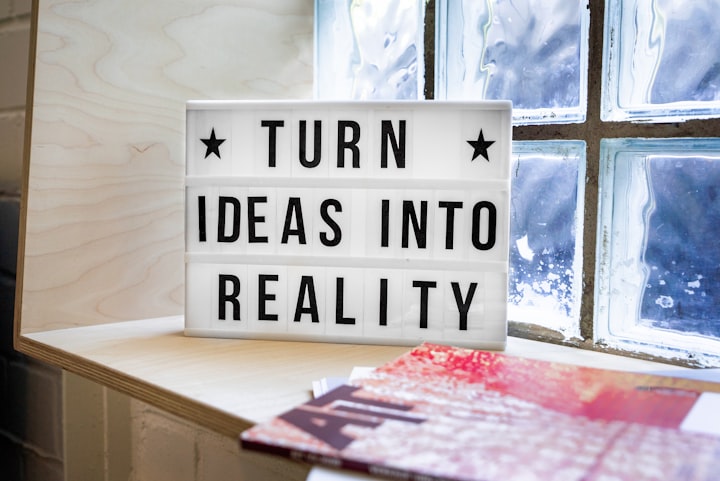The Beauty of Intentional Thought
Think, think, think

What’s the first thing you do in the morning?
Grab you phone and scroll through social media?
Read the news, maybe?
Are your thoughts throughout the day mostly fleeting? How often do you think deeply about something?
·····
Before the advent of modern technology, we all had to rely on the wetware between our ears to remember things and process ideas. (Of course, this is still the ideal process.)
Before technology, new information came at us a lot slower. Even for voracious readers, the primary means of consumption were printed materials: newspapers, magazines, other periodicals, etc. The newspaper arrived once a day; some magazines once a week. For books, you had to go somewhere to buy them, check them out, or order them via the mail.
All of the in-between waiting gave our brains time to assimilate new information and form new ideas. The process went something like this:
- Consume information
- Consider it against prior experiences and thoughts
- Formulate new thoughts and ideas, alone or as part of discussion with others
- Assimilate or dismiss
- If assimilated, act on new thoughts / knowledge
- Rinse and repeat
The challenge: the faster information comes at you, the less time you have to do steps 2 and 3. The consequence is thinking that is both shallow and hollow which really isn’t thinking at all.
Why is thinking important?
The short answer is that thinking is the only way we can make sense of the world. Our brains are remarkable: taking in torrents of input (information and stimulus) and processing most of it automatically as either useful or not.
The slightly longer answer is that without thinking, we can’t formulate our own ideas about things. If we don’t think, we can unwittingly become a blind follower to any number of loud voices that are bent on pursuing their own self interests.
That may seem like hyperbole, but the actual definition of influencer is to influence people — to sway others to your way of thinking.
And the easiest way to get someone to think like you is actually to convince them not to think for themselves at all. If that doesn’t work, then you have to manipulate people in subtle but convincing ways to adopt your way of thinking.
Intentional thought, then, is the decisive factor in avoiding hoodwinkery. That’s why intentional thought is so important. As Jordan Gross put it:
Improving thinking is important because it gives us the opportunity to formulate our own ideas in a world with endless opinions. It gives us the confidence to think and reflect and believe in what we want, not anyone else.
It’s important to remember that intentional thinking doesn’t happen in a vacuum. There are frameworks of human decency and normal behavior that should, at the very least, serve as guideposts on the journey of independent thought. In the increasing complexity of life today, taking in external information is critical to forming thoughts and ideas that have the potential to benefit humanity, even when the subset of humanity in question is only yourself.
How do you engage in intentional thought?
First, you have to stop responding with the first thing that comes to mind. This is as true in conversations with others as it is in self-talk. You have to give yourself space to think.
It’s hard.
At the outset, you will likely respond to the initial stimulus in a way you are accustomed. So, after what may be a “negative” response, you may have to stop yourself and go back; challenge the thoughts you just had and replace them with other thoughts.
Once you’ve challenged your own thoughts (metacognition), then you’ve freed up space to alter your response, if necessary.
In conversation, for example, it’s not necessary (and often undesirable) to answer with the first thing that comes to mind. Speaking first then thinking is the basis for every hurtful thing ever said between two people who otherwise love each other.
Apart from how we respond in conversation, being intentional about thought means giving yourself space to stop and think about the things you read, hear, and watch. The adage “everyone is working an angle” means you have to be vigilant; question everything.
Here’s where you have to be careful: questioning everything can lead to cynicism. Being open and curious is the best way to avoid becoming cynical. (Unless you’re going for cynicism in which case you’ll need to be as close-minded and opinionated as possible.)
Intentional thought can and should be part of a virtuous cycle. The more you open your mind to new thoughts and ideas, the more intentional you become about the thoughts you entertain and the things you learn which leads to greater curiosity and even better ideas.
Give yourself permission to slow down a bit and be curious. A bit of bloated silence never hurt anyone, and it might just lead you to discover something new about yourself.
·····
Thanks for reading!
About the Creator
Aaron Pace
Married to my best friend. Father to five exuberant children. Fledgling entrepreneur. Writer. Software developer. Inventory management expert.






Comments
There are no comments for this story
Be the first to respond and start the conversation.